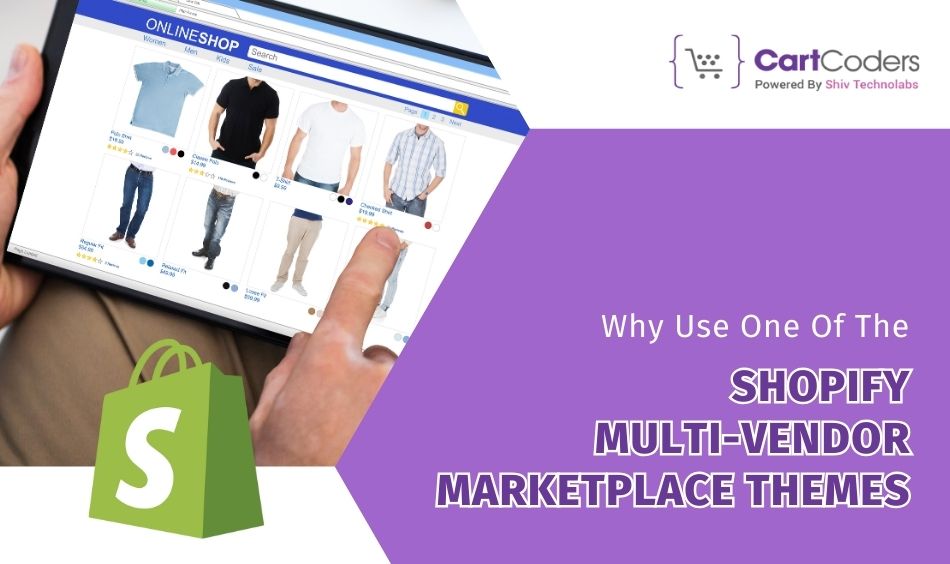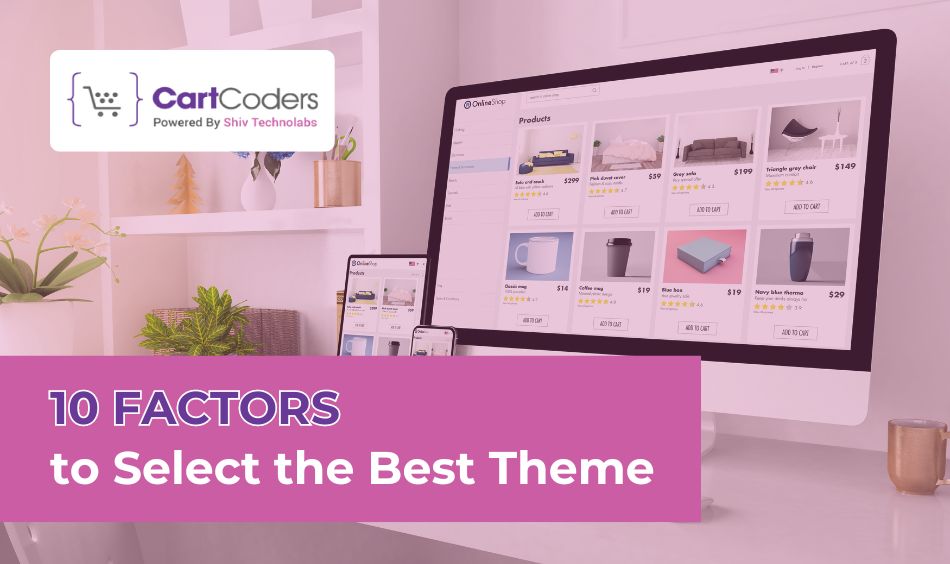Custom Engagement Solutions
Unlock tailored solutions with a free, no-obligation strategy session.
Expert Developers & Engineers on Demand
Scale Your Team with Skilled IT Professionals
Expert Guidance for Digital Transformation

Choosing the right theme for a Shopify marketplace is a vital step in establishing a successful online presence. The theme you select influences not only the visual appeal of your store but also its functionality and overall efficiency. In a market where first impressions are critical, a well-designed theme can significantly enhance user experience and streamline operations. This choice can determine how easily customers and vendors interact with your platform, impacting everything from the ease of browsing and purchasing to the management of vendor relationships.
The choice of a theme for a Shopify marketplace can significantly influence the success of an online store. According to recent data, approximately 70% of shoppers will decide to stay or leave a website based on its design and functionality within the first few seconds. This highlights the importance of selecting a theme that not only looks appealing but also provides a smooth user experience. Studies show that a well-designed user interface can increase conversion rates by up to 200%, emphasizing the need to invest in a theme that aligns with your marketplace’s requirements.
Additionally, the global e-commerce market is projected to reach $7.4 trillion by 2025, with a significant portion driven by marketplaces. Having a professionally developed Shopify marketplace is essential for capturing a share of this expanding market. Hiring a Shopify developer can be a strategic choice to ensure your theme is expertly customized to optimize functionality and performance, allowing you to compete effectively in this growing sector. Professional development services can lead to better integration, functionality, and ultimately, increased revenue for your online marketplace.

Selecting a theme specifically designed for Shopify multi-vendor marketplaces offers several distinct advantages that are essential for running a successful online marketplace. These themes are crafted with the unique needs of multi-vendor setups in mind, integrating features that support the management of multiple vendors and diverse product listings.
Firstly, multi-vendor themes come equipped with features that simplify the administration of vendor accounts and product catalogs. This includes custom vendor dashboards that provide essential tools and insights, making it easier for vendors to manage their products and track sales. Additionally, these themes often include advanced product filters and search functionalities that help customers find what they are looking for quickly, improving their overall shopping experience.
Another significant benefit is the theme’s ability to handle various payment structures and commission models. This is crucial for a multi-vendor marketplace where transactions are more complex compared to a single-vendor store. Themes designed for this purpose typically include built-in support for managing different payment gateways and calculating commissions, reducing the need for additional customization.
Using a theme that is designed for multi-vendor marketplaces can also save time and resources. These themes come with pre-built functionalities that address common operational challenges, minimizing the need for extensive development work. This means you can focus on growing your business rather than dealing with technical issues.
Also read : 10 Best Shopify Themes for Beauty/Cosmetics Products 2024

When choosing a theme for a Shopify marketplace, several critical factors come into play to make sure it meets the needs of your business and its users. Here are ten essential considerations to keep in mind:
A top priority is how well the theme supports vendor management. Look for themes that offer built-in features such as vendor dashboards and account management tools. These should allow vendors to easily upload and manage their products, track sales, and handle their orders. A theme with strong vendor management tools will reduce administrative overhead and ensure a smoother experience for all parties involved.
Effective product display and search functionality are crucial for a marketplace. The theme should offer customizable product pages that can handle a variety of products from different vendors. Advanced search options, such as filters and sorting, are essential to help customers quickly find what they are looking for. Make sure the theme supports high-quality images and detailed product descriptions to attract and inform buyers.
With an increasing number of customers shopping on mobile devices, a responsive design is vital. The theme should adapt to different screen sizes and devices, providing a consistent and user-friendly experience across desktops, tablets, and smartphones. Check that the theme has been tested for mobile compatibility to ensure your marketplace looks and functions well on all devices.
Efficient payment processing is key to running a successful marketplace. The theme should support integration with multiple payment gateways, allowing for flexibility in transaction processing. This includes handling different currencies and payment methods, which is particularly important for international transactions. Ensure that the theme supports secure payment processing to protect both vendors and customers.
The ability to customize the theme to fit your brand’s identity is important. Look for themes that offer flexible design options, such as adjustable layouts, color schemes, and typography. Customizability will help you create a unique marketplace that stands out from the competition and aligns with your brand’s visual identity.
Also read : How to Edit Shopify Theme Code?
An intuitive and easy-to-use interface is crucial for user satisfaction. The theme should offer clear navigation menus, a straightforward checkout process, and user-friendly design elements. Good usability improves customer retention and reduces bounce rates. Test the theme’s navigation and overall user experience to ensure it meets the needs of your target audience.
A theme’s performance can significantly impact the overall user experience. Choose a theme that is optimized for fast load times and efficient performance. A slow-loading site can deter potential customers and affect your marketplace’s credibility. Check the theme’s performance metrics and consider running speed tests to ensure it meets industry standards.
Reliable support and detailed documentation are essential for addressing any issues that may arise. Look for themes that come with comprehensive documentation, including setup guides and troubleshooting tips. Additionally, a theme with responsive customer support will be valuable for resolving any technical problems quickly and effectively.
As your marketplace grows, the theme should be able to handle increased traffic and additional features. Choose a theme that is designed with scalability in mind, allowing for future expansion without compromising performance. This ensures that your marketplace can adapt to growing demands and evolving business needs.
To attract more visitors to your marketplace, the theme should be designed with SEO in mind. Look for features that support search engine optimization, such as clean code, customizable meta tags, and optimized image sizes. An SEO-friendly theme helps improve your marketplace’s visibility in search engine results, driving more organic traffic to your site.
Choosing the right theme for your Shopify marketplace is a foundational step in building an effective and engaging online platform. By considering key factors such as vendor management features, product display and search functionality, responsive design, and payment gateway integration, you can select a theme that supports your business goals and enhances the user experience. A well-chosen theme not only improves the operational efficiency of your marketplace but also contributes to the satisfaction of both vendors and customers, ultimately driving the success of your online business.
Taking the time to evaluate these factors will help you make an informed decision, ensuring that your Shopify marketplace is equipped to handle growth, provide excellent service, and stand out in a competitive market. Remember, the right theme is more than just a design choice—it’s a strategic component that supports your marketplace’s functionality and user engagement.
At CartCoders, we specialize in Shopify marketplace development, offering expert solutions to create and optimize your multi-vendor platform. Our team understands the intricacies of building a successful marketplace and can help you select and customize the perfect theme to meet your specific needs. With a focus on performance, user experience, and scalability, CartCoders provides the expertise required to turn your vision into a thriving online marketplace. Explore how our services can support your Shopify marketplace goals and ensure your platform is both functional and engaging. Contact CartCoders today to get started on your path to success.
Projects delivered in 15+ industries.
95% retention rate, building lasting partnerships.
Serving clients across 25+ countries.
60+ pros | 10+ years of experience.